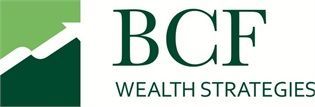With recent economic headlines hinting at potential fiscal challenges, the word "stagflation" has resurfaced into modern conversations. Perhaps you've heard Federal Reserve officials voice concerns about certain economic indicators, leaving many feeling a renewed sense of anxiety. However, understanding this concept can help you remain informed without unnecessary alarm.
Defining Stagflation
Stagflation is a term used to describe a rare and troublesome economic situation characterized by three main conditions: slow or stagnant economic growth, high unemployment, and rising inflation. This trifecta creates a challenging environment where typical economic solutions often contradict one another.
Why Stagflation is Particularly Difficult
The usual methods to combat either inflation or unemployment alone often become less effective in a stagflation scenario. For example, increasing interest rates might help fight inflation but typically worsens unemployment. Conversely, spending to boost employment could further spur inflation.
Historical Triggers and Current Concerns
Historically, stagflation was most notably present during the 1970s oil crisis. Today, economists observe similar warning signs such as rising costs of inputs and disrupted trade, sparking renewed concern over this economic condition's reemergence.
Implications for Consumers and Policymakers
Stagflation exerts dual pressure, presenting difficulties for both consumers dealing with reduced job opportunities and rising costs, as well as for policymakers trying to balance growth and inflation controls. This dynamic complicates decision-making and strategic planning on both an individual and governmental level.
Accessing Tools to Stay Ahead
Here are some practical steps you can take today:
- Regularly review and adjust your budget to accommodate shifting prices.
- Build an emergency savings fund that exceeds conventional advice.
- Stay diversified with your investments, maintaining a long-term perspective.
- Focus on paying down high-interest debt to reduce potential vulnerabilities.
Your concerns about stagflation are valid, yet it's important to remember that knowledge is power. By staying informed and proactive, you reinforce your financial resilience. While stagflation isn't guaranteed, these steps are universally wise for managing uncertainty. If tailored advice seems beneficial, don’t hesitate to consult with a financial advisor to review your plans and adapt to the evolving financial landscape.
